Attributed to Ogawa Haritsu (Ritsuo, 1663-1747), signed on the original wood box Haritsu saku kaizukushi Japan, first half of 18th century, Edo period (1615-1868) Superbly modeled in the form of a cluster of shells, the largest an upturned awabi (abalone) and the other a sazae (horned turban) resting against a closed clam encrusted with barnacles, each with a separately fashioned lid decorated with different varieties of crustacea interspersed with seaweed. With the original wood awasebako (fitted box), with two paper labels, inscribed Haritsu saku kaizukushi (‘Made by Haritsu. Assortment of shells’). HEIGHT 13 cm, WIDTH 32 cm, DEPTH 27.5 cm Condition: Excellent condition with only minor surface wear. Provenance: British private collection, formerly with Gregg Baker. Ogawa Haritsu (formerly often referred to outside Japan by his alternative name of Ritsuo) was among the first Japanese lacquer artists to establish an independent reputation outside of the hereditary craft dynasties of Kyoto, Edo, and Kanazawa. Following an early career as a haiku poet, he is thought to have first turned his attention to lacquer design in middle age and soon attracted a wide following thanks to his novel choice of subject matter and pioneering and imaginative use of unusual materials; at some point after 1710 he was hired by Tsugaru Nobuhisa (1669-1747), lord of a domain in northern Japan, for whom he worked until 1731. In lacquer, he introduced a vocabulary of new materials not usually associated with lacquer artists such as glazed ceramic pieces, mother-of-pearl and lead. Haritsu also mastered the technique of making lacquer surfaces appear to resemble other materials such as bronze, tile, ink sticks and pottery, a style of decoration which became known as Haritsu saiku. Shells in combination with seaweed were a favored subject of Ogawa Haritsu and his followers, see for example a wood bunko decorated with very similar ceramic shells recently sold at Bonhams, Fine Japanese and Korean Art, 17 March 2021, New York, lot 594 (sold for 27,812 USD). The applied glazes in the present example are certainly emulative of lacquer, being a key feature of Ogawa Haritsu’s designs. The combination of elements flow over seamlessly into one another making it rather difficult to decide whether an individual decorative element is glazed or lacquered.
Attributed to Ogawa Haritsu (Ritsuo, 1663-1747), signed on the original wood box Haritsu saku kaizukushi Japan, first half of 18th century, Edo period (1615-1868) Superbly modeled in the form of a cluster of shells, the largest an upturned awabi (abalone) and the other a sazae (horned turban) resting against a closed clam encrusted with barnacles, each with a separately fashioned lid decorated with different varieties of crustacea interspersed with seaweed. With the original wood awasebako (fitted box), with two paper labels, inscribed Haritsu saku kaizukushi (‘Made by Haritsu. Assortment of shells’). HEIGHT 13 cm, WIDTH 32 cm, DEPTH 27.5 cm Condition: Excellent condition with only minor surface wear. Provenance: British private collection, formerly with Gregg Baker. Ogawa Haritsu (formerly often referred to outside Japan by his alternative name of Ritsuo) was among the first Japanese lacquer artists to establish an independent reputation outside of the hereditary craft dynasties of Kyoto, Edo, and Kanazawa. Following an early career as a haiku poet, he is thought to have first turned his attention to lacquer design in middle age and soon attracted a wide following thanks to his novel choice of subject matter and pioneering and imaginative use of unusual materials; at some point after 1710 he was hired by Tsugaru Nobuhisa (1669-1747), lord of a domain in northern Japan, for whom he worked until 1731. In lacquer, he introduced a vocabulary of new materials not usually associated with lacquer artists such as glazed ceramic pieces, mother-of-pearl and lead. Haritsu also mastered the technique of making lacquer surfaces appear to resemble other materials such as bronze, tile, ink sticks and pottery, a style of decoration which became known as Haritsu saiku. Shells in combination with seaweed were a favored subject of Ogawa Haritsu and his followers, see for example a wood bunko decorated with very similar ceramic shells recently sold at Bonhams, Fine Japanese and Korean Art, 17 March 2021, New York, lot 594 (sold for 27,812 USD). The applied glazes in the present example are certainly emulative of lacquer, being a key feature of Ogawa Haritsu’s designs. The combination of elements flow over seamlessly into one another making it rather difficult to decide whether an individual decorative element is glazed or lacquered.
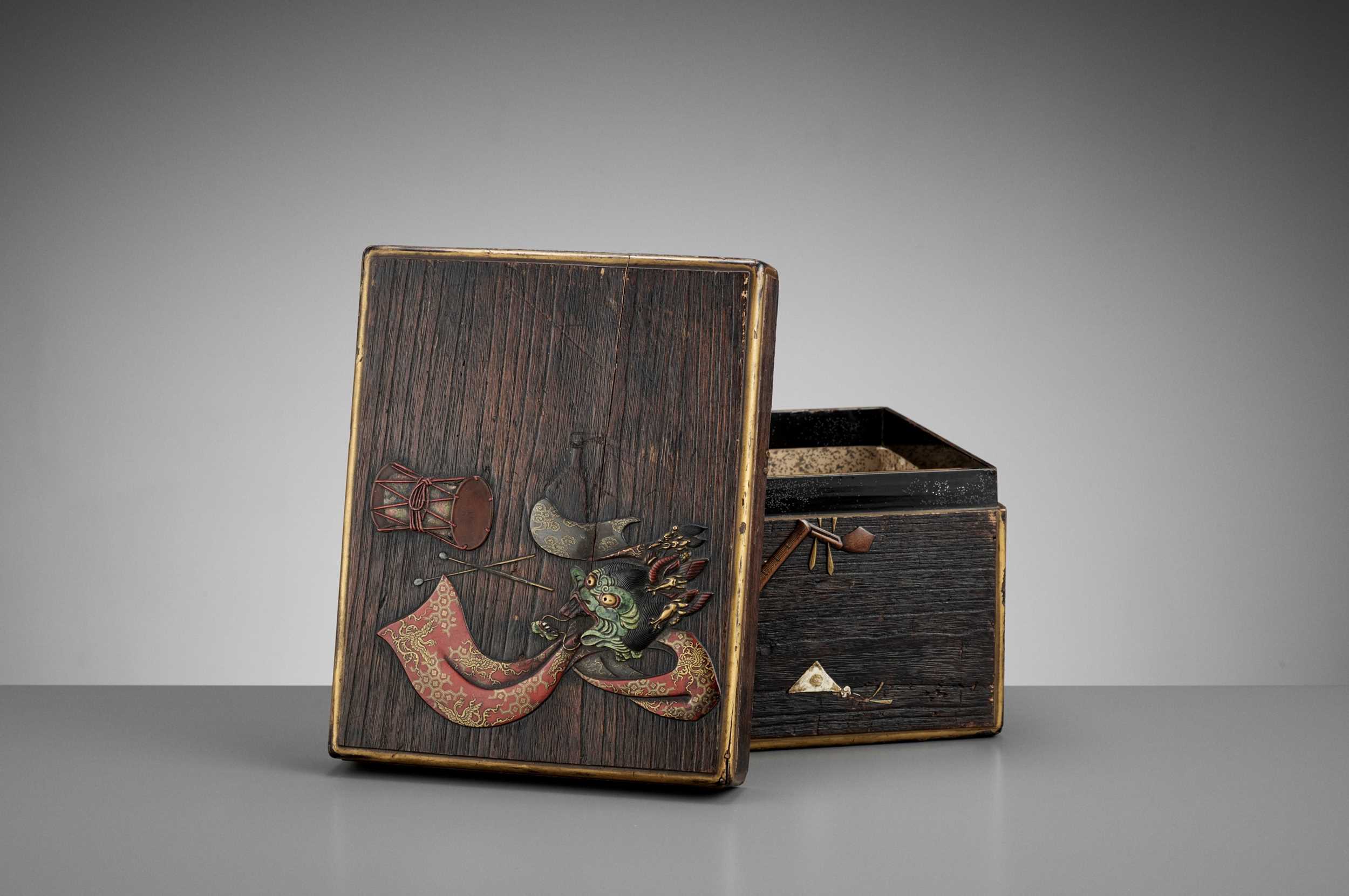
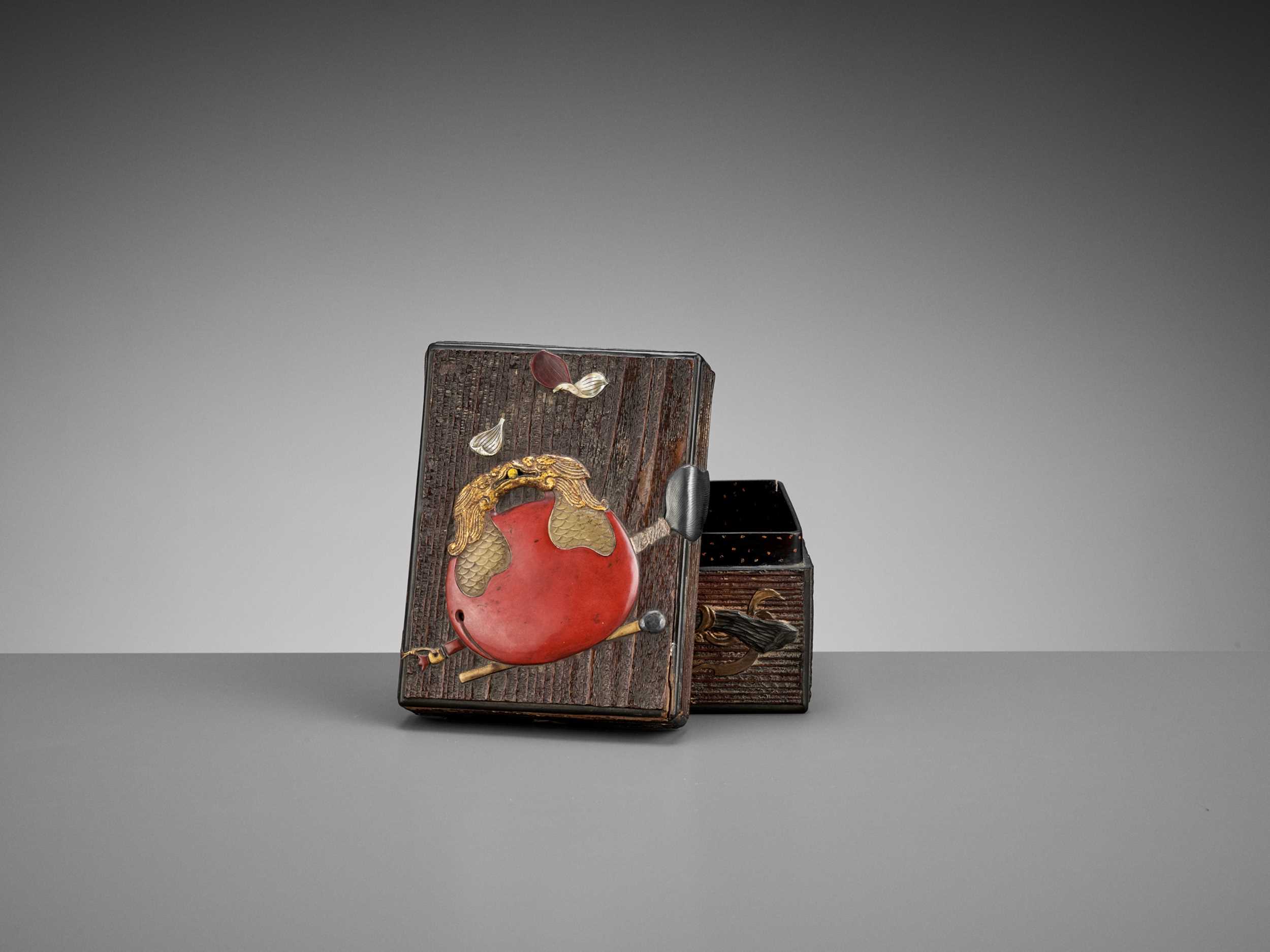
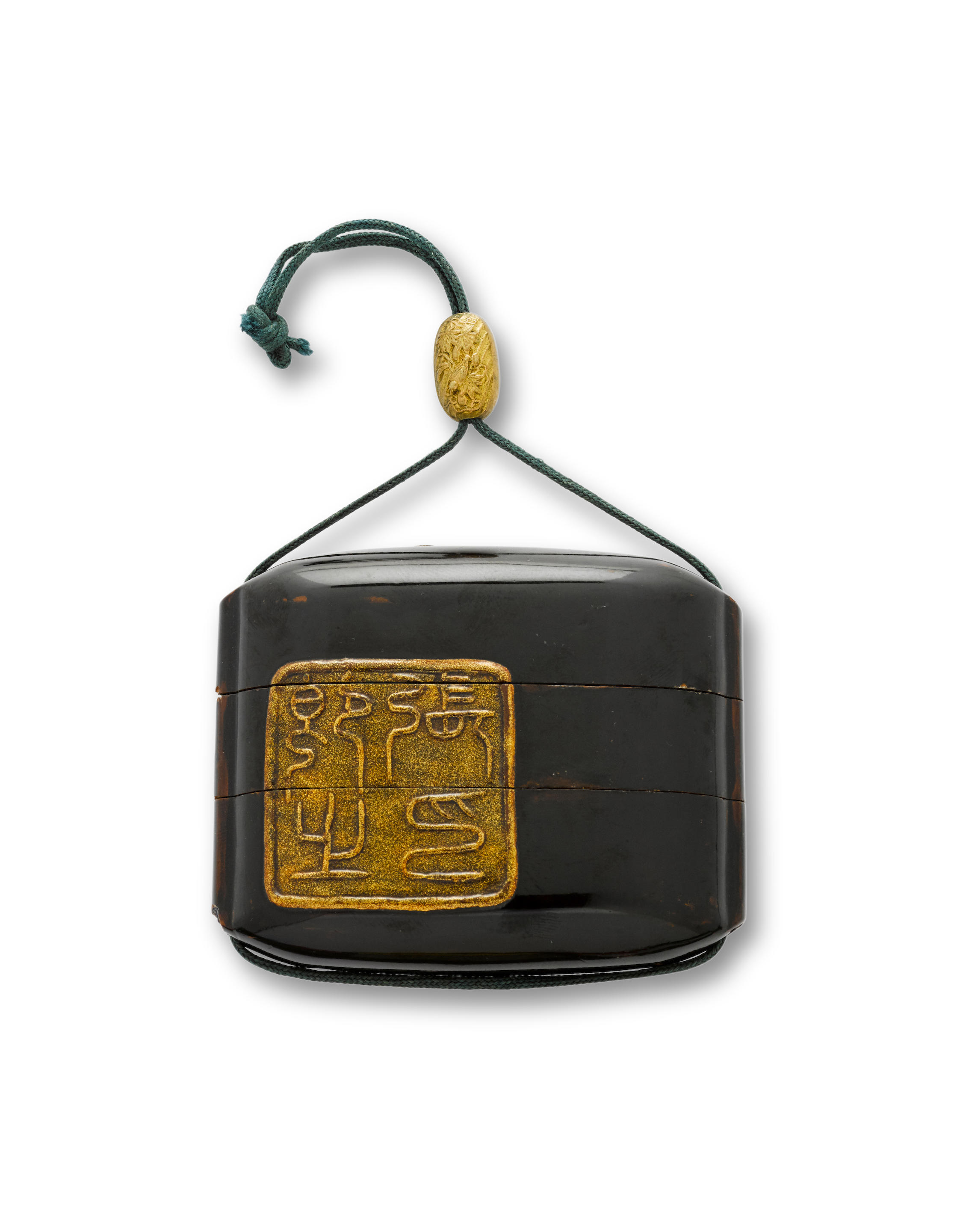

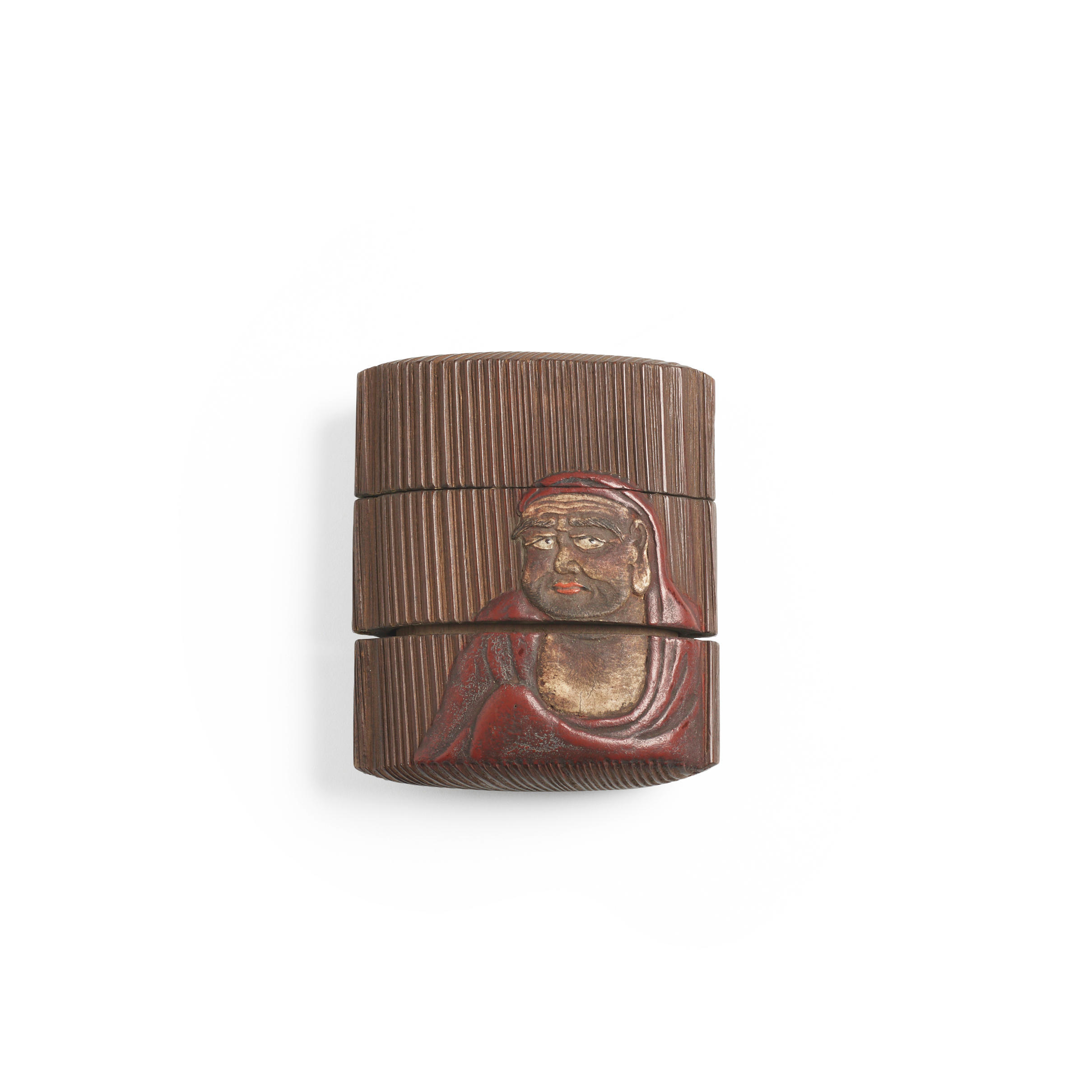
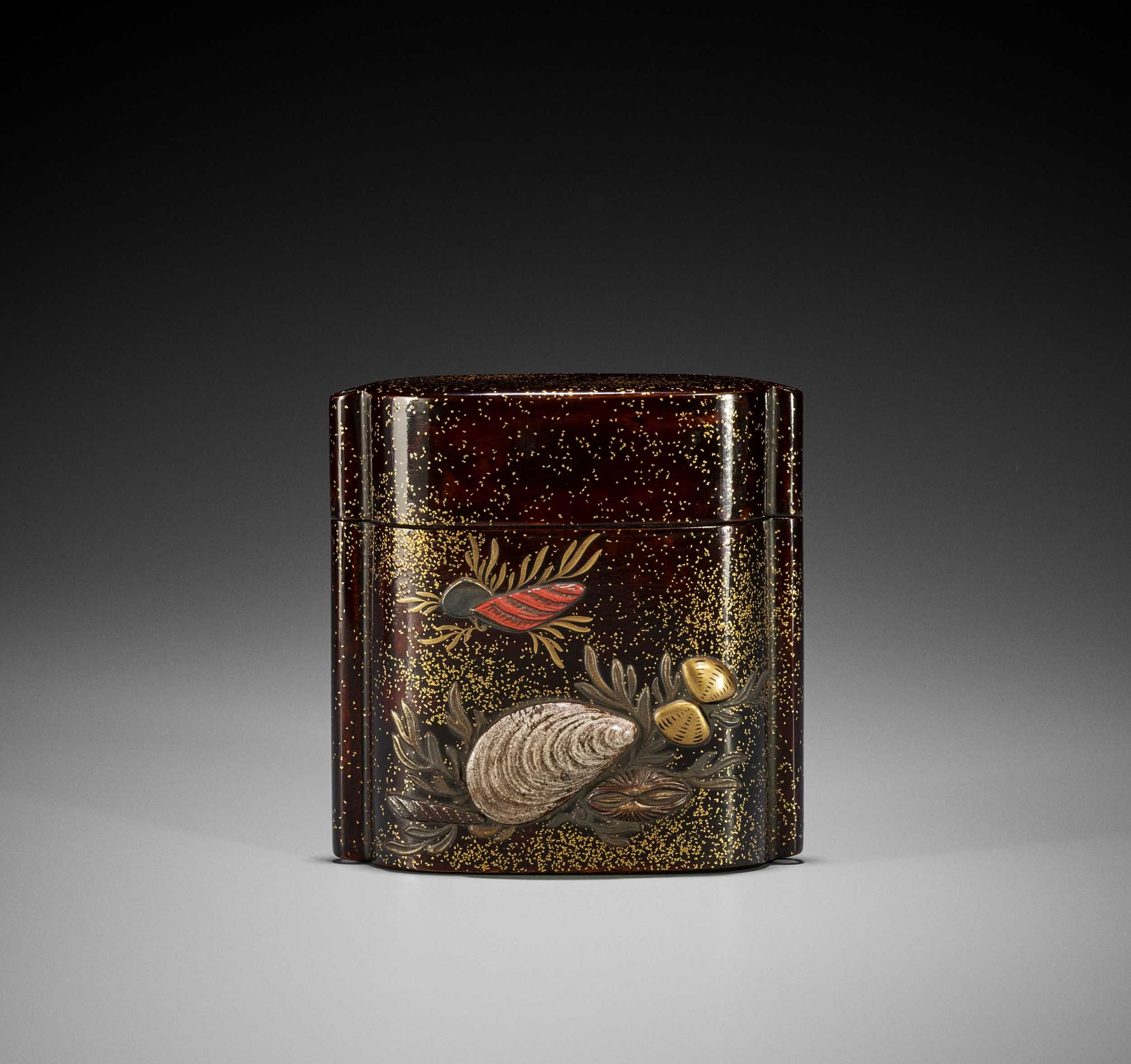
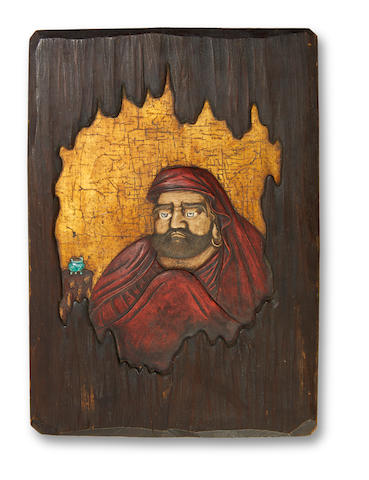
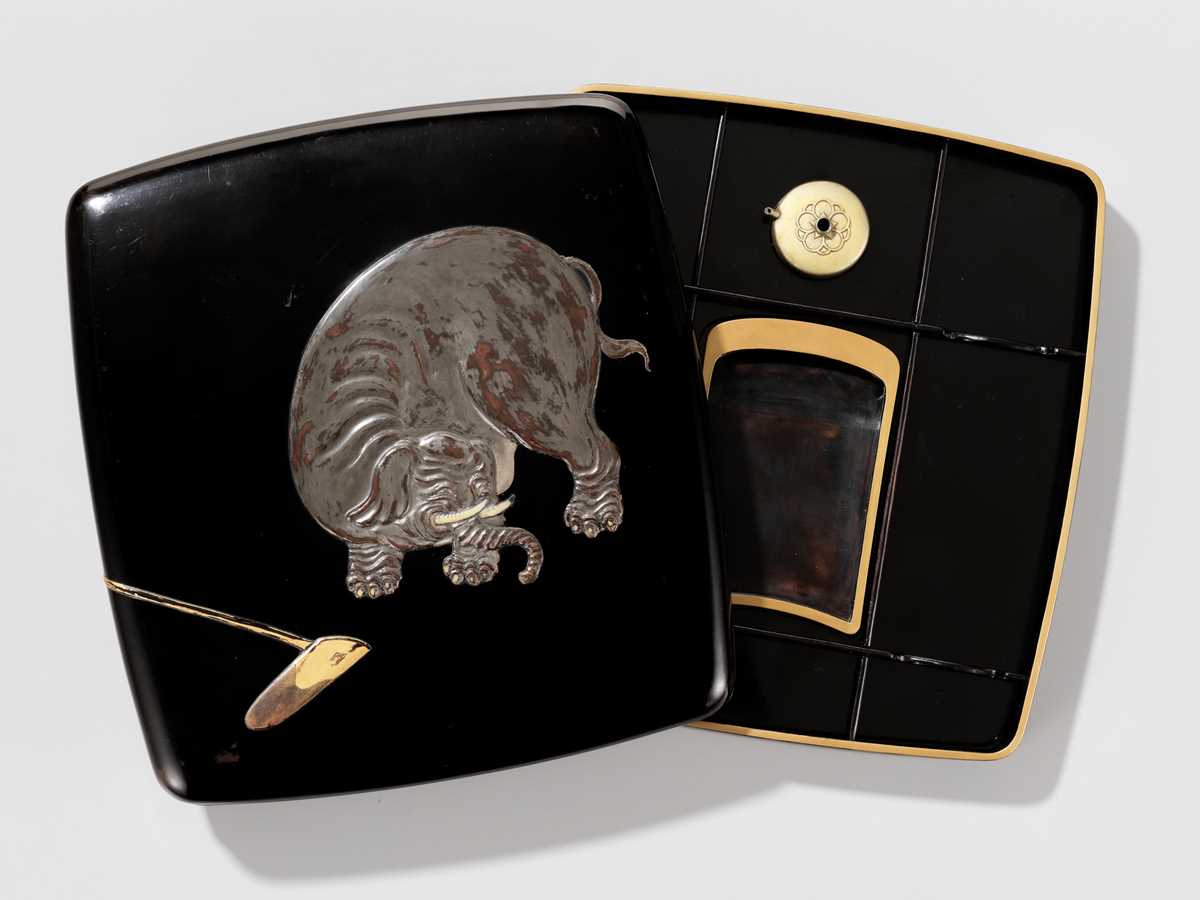

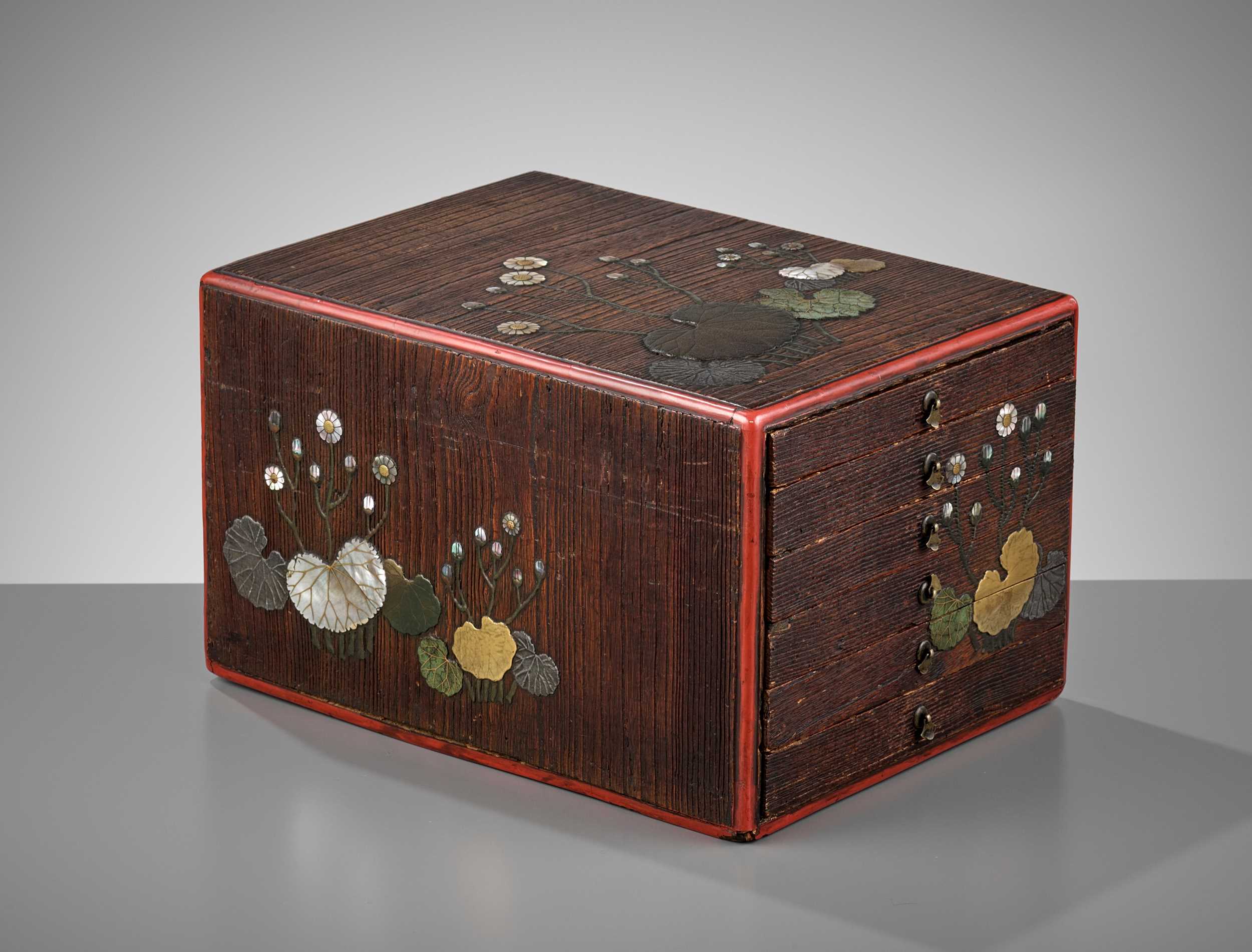

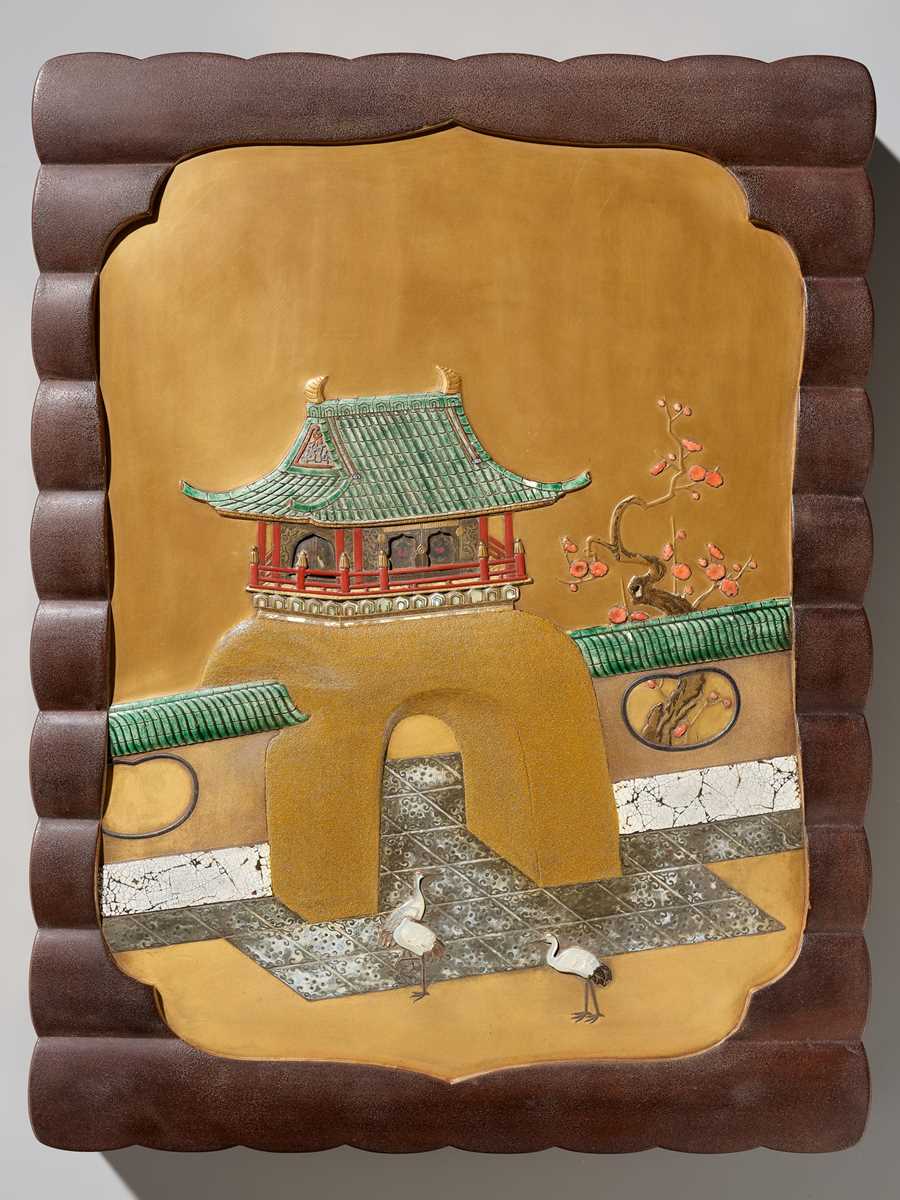

Try LotSearch and its premium features for 7 days - without any costs!
Be notified automatically about new items in upcoming auctions.
Create an alert